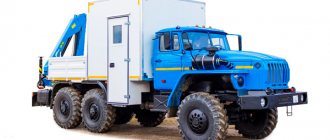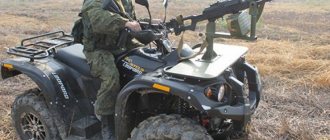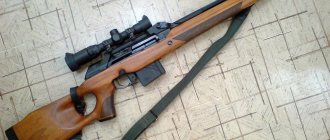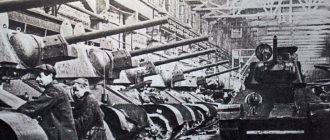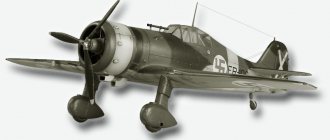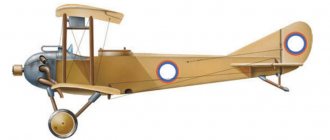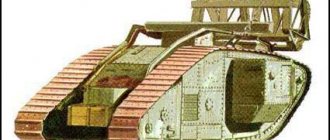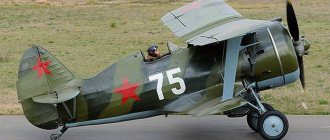The BTR-82A armored personnel carrier is designed to transport personnel of motorized rifle units during a march or maneuver by troops, including overcoming water obstacles immediately, protecting the crew and landing forces from small arms fire, mines, shell fragments and destructive factors of weapons of mass destruction, defeating and suppressing enemy personnel and lightly armored goals.
The BTR-82A is the result of the modernization of the BTR-80A armored personnel carrier in order to improve its main tactical and technical indicators and operational characteristics of the armored personnel carrier through the use of an increased power power plant in its design, installation of a weapons stabilizer and a combined (day-night) sight, modification of transmission units and chassis.
The vehicle is armed with a unified fighting compartment with stabilized cannon and machine gun armament. The combined (day-night) sight TKN-4GA-01 provides the gunner with firing from cannon and machine gun weapons at any time of the day from a standstill and on the move. A weapon complex stabilized in 2 planes and new observation and aiming devices made it possible to increase the efficiency of target detection and engagement.
Installation in the BTR-82A of a new KamAZ-740.14-300 engine with a power of 300 hp, shock absorbers with increased energy intensity, a modernized transfer case, cardan shafts, axles and unified final drives made it possible to increase the overall service life of the vehicle, average speeds over rough terrain, and improve reliability chassis, ride quality and overall mobility characteristics.
The armor of the hull and turret is capable of resisting enemy small arms and fragments of mines and shells. For additional protection of the crew and troops, an anti-fragmentation protection kit is installed in the vehicle.
The vehicle is equipped with a system of protection against weapons of mass destruction, fire-fighting equipment, water pumping equipment, and a habitability system.
The living conditions of the crew and troops have been improved thanks to the use of an air conditioning system (heater, air conditioner) and a diesel generator.
Autonomous diesel generator set provides:
- operation of the main consumers of electricity (weapon stabilizer, aiming and surveillance devices, communications equipment and saving the resource of the main engine by eliminating its operation while parked (in defense, at checkpoints, etc.) to supply power to electricity consumers;
- charging batteries when the main generator is not working;
- reducing the visibility of the vehicle in the thermal and acoustic ranges.
New digital communications have improved the stability, secrecy and quality of communications, expanded control functionality and ensures integration into a unified tactical level control system.
The military rejected the BTR-90, reproaching suppliers for being infatuated with “cosmetics”
Came out the wrong door
“One of the main complaints of the Ministry of Defense against the BTR-90 is that this armored personnel carrier does not have an exit for landing troops to the stern,” Suvorov briefly explained the logic of the military.
The mention of complaints about the layout of the landing hatch finally makes the story very sad. The plight of vehicles descended from the BTR-60 (BTR-70, BTR-80, BTR-82) is associated with the layout of the engine-transmission compartment (MTO).
These armored personnel carriers were required to be buoyant, which led to the removal of landing hatches on the sides of the vehicle. The troops landing from them became vulnerable to enemy fire. This, in turn, required covering the disembarking motorized riflemen with the body of the vehicle, turning the other side towards the enemy. The BTR-90 inherited this annoying feature of modern military personnel.
“We will no longer purchase the BTR-80, because I can’t imagine leaving the vehicle while moving through the side door,” said Vladimir Popovkin, then First Deputy Minister of Defense for Armaments, in the spring of 2010.
Armored re-Rostock
The BTR-90, in essence, is no longer an armored personnel carrier familiar to the military. The vehicle's security was enhanced and it was given heavy (perhaps even unnecessarily heavy) weapons. Now “Rostock” can be briefly described as an attempt at a wheeled infantry fighting vehicle - a kind of overgrown armored personnel carrier. On the familiar wheeled chassis of the BTR-80, the developers mounted a fighting compartment with a 30-mm 2A42 cannon from the BMP-2 armament. In the most chimerical of the weapon options, it was proposed to install the so-called “Bakhcha-U” module on the vehicle - a lethal pair of 100-mm 2A70 guns and a 30-mm 2A72 assault rifle, removed from the BMP-3.
The structural protection, including mine protection, was significantly strengthened: the Rostok received a so-called “V-shaped bottom”, which is more resistant to shock waves than a flat one.
However, all these improvements do not inspire the military. The old vehicle, overloaded with weapons, is no longer the usual army “batter”, but also not a heavy “bekha” (BMP). And the Ministry of Defense has many of its own specific requirements for infantry fighting vehicles, which are impossible to fulfill on the basis of the old BTR-80.
In addition, the BTR-90 cannot be called modern: it has been in development for twenty years, and the first prototype was assembled at the Arzamas plant at the very beginning of 1994.
Time for unified platforms
The military has now embarked on a grandiose restructuring of the appearance of the ground forces, which in many ways breaks previous views on the combat system of motorized rifle units. These old views, we recall, were formed by the task of conducting large-scale front-line operations in the European theater in the context of the use of nuclear weapons.
The transition from a divisional-regimental structure to permanently ready brigades on enlarged battalions was complemented by a new concept of technical equipment. In brigade structures, it has been recognized as advisable to unify as much as possible all combat, transport and special vehicles on a single chassis.
For “heavy” brigades (on tracked vehicles), such a basis will be the universal platform currently being developed by UralvagonArmata. Moreover, which is typical, main battle tanks, tracked infantry fighting vehicles (or heavy armored personnel carriers), and all other brigade equipment (transporters, command and staff vehicles, self-propelled artillery chassis, engineering equipment, etc.) will be built on this chassis.
For the “medium” brigades, the basis will be two armored platforms developed on the themes “Boomerang” and “Kurganets-25”. “Boomerang,” as far as one can judge, is the very new wheeled armored personnel carrier, which will replace the BTR-80/82 family and the remaining restless BTR-90.
A single tracked combat vehicle was previously developed under the code “Kurganets”, from which one can cautiously conclude that the “medium” brigades in the army will also be of two types: on wheels and on tracks.
In turn, the “light” brigades will receive armored vehicles. In particular, the machines being developed were called “Typhoon” and “Tiger”.
And while the industry cannot provide these single chassis (and this will happen even according to official estimates no earlier than 2016), the Ministry of Defense will not spend money on purchasing, as the Commander-in-Chief of the Ground Forces Alexander Postnikov put it, “seventeenth modifications,” preferring to improve the existing fleet of equipment by installing new weapons and equipment.
The author's opinion may not coincide with the position of the editors
BTR-80 drummer
BTR-80 8×8 1/6 scale based on Arduino Mega 2560 with MIDI interface
Next is a long story about the creation of the armored personnel carrier from the very beginning. I made a model of the armored personnel carrier BTR-80 8x8 in 1/6 scale.
Key Features:
Electrically variable ground clearance for each wheel Onboard transmission with the ability to turn on the spot All wheels are controlled Gyrostabilization MIDI interface for entertainment
Main characteristics:
HxWxD 1180x460x440mm (at maximum ground clearance), track 400mm. Ground clearance varies from 0 to 80mm. Curb weight 21 kg Weight of steel body 6 kg Peak power of electric motors 2kW Power supply: two 6000mAh 3s LiPo batteries for electric motors, two 6000mAh 2s LiPo batteries for servos. The maximum speed is 30 km/h, then the tires are greatly inflated by centrifugal force and cling to each other. Theoretical chassis limit is about 60km/h
A story about the main features, for those who are too lazy to read
Transmission
The transmission is onboard - the left and right sides have their own electric motor. This allows you to transfer the necessary torque to the wheels when turning without using a differential, i.e. The differential is implemented in software in the control controller. This type of transmission allows you to turn on the spot. No additional blocking is required to increase cross-country ability.
Wheel reducers are homemade.
The result is such a base for the chassis
Next, I installed two three-phase touch brushless electric motors
Chassis
Made ground clearance control using servos
Maximum ground clearance
Minimum ground clearance
Steering trapezoids are longitudinal, not transverse
I had to make this set of aluminum parts myself
Chassis after assembly
This is how you can control the wheels independently
Accelerated video of chassis assembly - 18 minutes
Frame
Housing made of galvanized sheet metal 0.4mm thick. Made by soldering, soldered with POS-61 solder with acid flux.
I'm adding something)))
Copper headlights, inside CREE XML T6 LED with driver
After painting
Control system
The hardware basis is the Crius All in one pro multicopter controller based on Arduino Mega 2560. The controller has many input/output ports and a ready-made three-axis gyro system. The controller is located in the center of the chassis on top in a sealed aluminum case, along with an eight-channel radio control system receiver.
The Arduino Multiwii 2.2 code is taken as the software basis. I increased the number of servo channels to 15, using the software method of generating a PWM signal for servos.
I made four functions in the steering: 1. On-board control, at zero speed, turn on the spot, all wheels are turned by the plow. 2. On-board control, at zero speed, turn in place, all wheels in the center. 3. Front wheel rotation, motor differential. 4. The rotation of all wheels, the rear ones depend on the speed, the differential of the motor.
And four functions of the electric suspension: 1. All suspension servos are disabled. 2. Static ground clearance and chassis horizon. 3. Progressive tilt of the chassis when turning, like motorcyclists. 4. Gyrostabilization of the chassis.
The remote control uses standard 8-channel aircraft radio equipment.
Check on the go
Enough dry descriptions - it's time to go for a ride!
Without a gun it looks sad, for safety we had to make it quick-release with a magnet so as not to injure children.
BTR-80 drummer
I decided to play pranks - cross a snake with a boa constrictor. In addition to RC modeling, I am interested in music - and let the armored personnel carrier play with its very sophisticated suspension on a drum set. I made a MIDI adapter and wrote a subroutine for converting notes into moving the suspension servos.
The entire circuit fits into the connector
The wheel is placed on the drum pedal, which strikes the drum. Each wheel will strike its drum according to the recorded note. Notes are transmitted from a computer or synthesizer via a standard music MIDI interface. Four wheels are used for playing: two wheels for the double gimbal bass kick pedal, one wheel for the lead drum pedal and one for the hi-hat cymbal pedal. The fifth wheel presses the wah pedal for the guitar.
This is what happened
Again for lazy video readers
That's all! The armored personnel carrier was disassembled to create a new project, but more on that another time...
PS Musicians will begin to doubt the veracity of the video. Yes, it's semi-fake.
Unfortunately, an idea cannot always be easily put into practice; I only succeeded halfway. Basically this is my joke video
final work with the armored personnel carrier. The armored personnel carrier drums, of course, but not as much as is necessary for normal sound recording.
The drum track still had to be recorded from a synthesizer, the main reasons: 1. The mass of the model is small and parasitic resonances begin, because There are springs in the suspension and in the drum pedals, it turns out to be a mess. Pay attention in the video where the armored personnel carrier without the body has become even lighter - the beaters hardly hit the drums. 2. Weak servos that quickly overheat or the gears break off.
